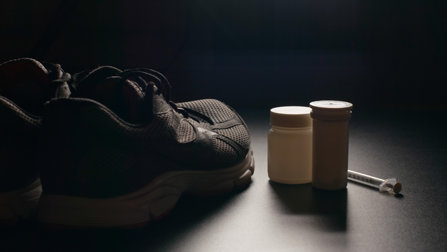Yet Another Young Athlete Lost to an Opioid Overdose

In February 2017, we lost another fine athlete and student. That’s when Nick Roberts of the University of Pittsburgh was found dead in his on-campus apartment. A month later, the coroner announced that his death was due to an accidental overdose of fentanyl.
That’s the simplicity of the story. When you have seen this happen too many times, you can read a little more into it. And you realize how unnecessary and preventable many deaths like this are.
Young Mr. Roberts was a wrestler. In high school, he captured three state titles. In 2015, he was wrestling at Ohio State and then transferred to the University of Pittsburgh where he won a Division II national championship.
Why is this important? Because this history and his level of dedication mean that he could have been injured during workouts or tournaments, perhaps even multiple times. Doctors are far too willing to send injured athletes home with bottles of painkillers. Athletes may depend on those painkillers to help them return to their sport as soon as possible—some may even return before they are fully healed because painkillers block out the remaining pain.
A Season-Ending Knee Injury
The news report on Roberts death notes one other significant point. His senior season of wrestling ended in November because of a knee injury.
We don’t know the sequence of events in this young man’s life. But based on the experiences of other young athletes, here’s what sometimes happens.
- The athlete is injured from time to time, perhaps needing surgery once or twice.
- He (or she) is given painkillers—more than are actually needed while he heals.
- The half-empty bottle sits at home.
- A slight injury sends the individual looking for the bottle of pills without consultation with the doctor.
- Without realizing it, the athlete learns to depend on these pills and doesn’t notice that he is starting to crave the mellow oblivion of the drugs.
Two other complicating factors enter in here: Heroin is much cheaper than pills. When a person has learned to rely on pills but they become expensive and hard to acquire, heroin begins to look attractive.
The other factor in this young man’s death is the fentanyl that’s being mixed into our heroin supplies or being pressed into counterfeit pills. Fentanyl is a powerful synthetic painkiller now being manufactured in illicit labs. It has taken many hundreds of lives in the last couple of years.
We don’t know that Roberts ever bought or used heroin. But this is the route to overdose death for many people. He could have bought what he thought was OxyContin from a drug dealer, not realizing it was really made of fentanyl, coloring and fillers.
When Your Sport is Taken Away From You
Did Roberts’ competition-ending injury also contribute to his death? When an athlete is benched due to an injury, the stress and disappointment could trigger a desire to make the mental pain go away. This could be another factor in his death or others like it.
What every parent, teacher and coach needs to realize is the vulnerability of teen and young adult athletes. They may not have the maturity, awareness or education to realize the risks they are taking if they learn to rely on painkillers too heavily, or if they misuse them for their mental effects.
A 2014 study of nearly 2,300 high school seniors revealed that 12% of male athletes and 8% of female athletes had abused their painkillers in the prior year. The study, published in the Journal of Child & Adolescent Substance Abuse, also found that these numbers were higher than rates of abuse by teens who were not athletes.
A parent that takes full control of a teen’s pills, doling them out one by one, could save that young person’s life by preventing abuse.
Robert’s was 23 years old and living in his own apartment. His life was his own and he was in charge of his medication. What could have prevented a death like this? Perhaps intensive drug education, both at home and at school. Counseling on the proper use of painkillers after an injury. And in his case, special attention after a season-ending injury.
We don’t know the full story of this young man’s death. But we understand the pattern that leads so many young athletes to addiction and overdose and those of us at Narconon Ojai will do whatever we can to prevent the loss of any more of these fine and bright young men and women.


